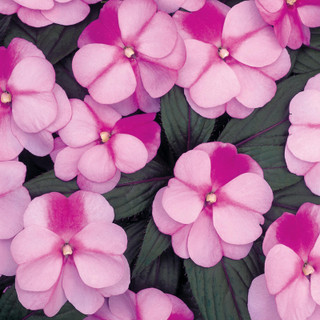
Begonias
Uses:
- Mass Planting
- Container Combinations
- Houseplants or in Gardens
Features:
- Attractive Foliage
- Colorful Flowers
- Easy to Grow
Sunlight:
- Full Shade to Full Sun
- Depends on Variety
Growing Zones:
- 9-11
- What is My Zone?
Begonia plants are typically used as a houseplant or in shaded summer beds. Blooming from early summer to frost, this plant adds color to containers or garden areas.
Why Buy Begonia Online
Begonia is a genus of flowering plants with more than 1,800 different plant species. This low-maintenance annual flower is a popular choice because it comes in many shapes, sizes, and colors for your garden area. Begonias are easy to grow, have eye-catching foliage, and can be brought indoors to continue growing over the winter. The most popular member of the family is the Tuberous Begonia, which bears red, orange, white, or pink ruffled flowers. Typically pest and disease resistant, this flower attracts hummingbirds and butterflies.
Outdoor containers or mass plantings
Grow indoors as a houseplant
Available in pink, orange, white, yellow & red colors
Typically a 6-12 inch size potted plant or up to a 5 foot outdoor plant
Growing zones 9-11
About Begonias

Wax Begonia, Tuberous Begonia, Angel Wing Begonia (names vary by type)
Tropical and subtropical regions, especially South and Central America, Asia, and Africa
Annuals
Deciduous
9–11
White, pink, red, orange, yellow, or bi-colored
Spring to fall
Upright, mounding, trailing, or bushy
Pollinators like bees and butterflies
some tolerate indirect light
Deer and rabbit browsing
How To Use Begonias In The Garden
Begonias are renowned for their diverse foliage and continuous flowering, making them a staple in many gardens. Most begonias are hardy in zones 9-11, and are commonly grown as annuals or houseplants. Attracting butterflies and hummingbirds, begonias are perfect for patios, porches, balconies, landscaping, and flower gardens. Their ability to bloom from early summer until frost provides consistent color, especially in shaded areas where other plants may not thrive.
Begonias are ideal for shaded summer beds, adding brightness where sunlight is limited. Smaller plants are great for container gardening, pairing well with other bedding plants and shallow-rooted companions in window boxes or hanging baskets. Larger varieties are perfect for mass planting or flower borders. Additionally, certain varieties can be grown indoors as houseplants, offering year-round enjoyment.
Types of Begonias
| Type | Scientific Name | Flower | Main Bloom Time | Foliage | Uses | Features |
|---|---|---|---|---|---|---|
| Wax (Fibrous-rooted) Begonias | Begonia × semperflorens-cultorum group | 1–1½ in. single or double; red, pink, white | Spring – frost (ever-blooming) | Rounded, waxy green or bronze leaves | Bedding, edging, window boxes, shade containers | Heat & shade tolerant, deer/rabbit resistant, “set-and-forget” annual |
| Tuberous Begonias | Begonia × tuberhybrida group (“Grandiflora,” Non-stop®, etc.) |
3–6 in.+; neon shades incl. yellow, orange | Mid-summer – frost (≈ 4 mo.) | Glossy green/bronze; succulent stems | Shade containers, hanging baskets, show plant | Huge blossoms, tuber stored dry, prefers cool nights |
| Hiemalis / Reiger / Elatior | Begonia × hiemalis (incl. “Christmas” begonias) |
Semi- to fully double; wide palette | Natural winter bloom (year-round indoors with short days) |
Glossy green | Flowering houseplant, holiday color | Blooms in low-light winter; best indoors; continuous color |
| Cane / Angel-Wing Begonias | Hybrids of cane-stem species | Dangling clusters; red, pink, white | Intermittent all year with good light | Long, speckled leaves, red undersides | Indoor statement plant, patios | Easy, dramatic foliage, good beginner cane |
| Polka-Dot Begonia | Begonia maculata | Pink, white or coral pendent clusters | Year-round under warm bright shade | Dark green leaves with silver dots; orange-red backs | Trendy houseplant, décor focal point | Iconic spotted leaves; needs humidity; cane habit |
| Rex Begonias | Begonia rexanesctry hybrids | Small pink/white | Summer | Spectacular silver, burgundy, purple, green spiral or maple-like leaves | Showy foliage houseplant, terrariums | Dazzling color, humidity-loving, somewhat finicky |
| Bolivian Begonias | Begonia boliviensis & hybrids | Narrow-petaled scarlet, orange, yellow, white | Summer – fall | Long, serrated, narrow leaves | Hanging baskets, hummingbird gardens | Huge tubers; thrives in heat; hummingbird magnet |
| Hardy Begonia | Begonia grandis subsp. evansiana | Small pink or white | Late summer – early fall | Heart-shaped green leaves, red veins/backs | Woodland perennial, under shrubs | One true cold-hardy species; spreads by bulbils |
Begonias Care
Begonias require well-draining soil rich in organic matter. Position them in locations with partial shade, as excessive sunlight can damage the foliage. Water the plants when the top two inches of soil feel dry, thoroughly soaking the root zone. Applying a balanced liquid fertilizer every four weeks during the growing season supports continuous blooming.
Pinch back growing tips every 2 to 4 weeks or when plants become leggy. Deadheading spent blooms maintains a tidy appearance and reduces disease risk. In cooler climates, move non-tuberous begonias indoors before temperatures drop below 45°F, placing them in bright, indirect light. Begonia containers should have drainage holes and a well-draining potting mix to prevent water accumulation.
Learn More About Begonia Care

Begonia Companion Plants
Plants that accent the bold waxy leaves and colorful blooms of the flower go well with begonias. Select companions that appreciate rich, moist soil and partial shade, such as impatiens, caladium and coleus. Hardy geraniums are also a favorite plant for partial shade, and provide a steady groundcover to smoother annual weeds.

































